What can Green Acres tell us about the history of college? More than you would think, and maybe about as much as you would think.
Recently, I wrote a Green Acres post that was all about what we can learn about sending a kid to college. It focused on the financial tips that Green Acres offered parents of college kids. Believe me, there were more tips more than you'd guess.
But in that episode, “Send a Boy to College,” there was also a tour-de-force scene between Oliver Douglas (Eddie Albert) and Mr. Haney (Pat Buttram) that made me think, “Wow, this could be its own stand alone post covering American history in the 1920s and 1930s.”
Plus, I recognize that some of the blog posts on The TV Professor are pretty lengthy. So this is a way of breaking up what would have been an insanely long article into two more manageable (but still pretty long) stories.
Anyway, what I'm getting at is – in a three minute scene on Green Acres, you can learn a surprising amount about the history of college, or at least college life during the 1920s and 1930s.
Today's "TV Lesson" Breakdown:
- The Plot of Sending a Boy to College
- How Mr. Haney Fits into the Plot
- A Stutz Bearcat
- A Racoon Coat
- Ukulele Ike
- A genuine Elliot Ness hip flask
- Non-alcoholic dandelion wine
- Official instruction book for singing like Betty Boop
- An autographed picture of Gilda Grey for a gym locker
- Rudy Vallee stein with the words to the Maine Stein Song
- Cat gut for stringing a tennis racket
- Bill Tilden Tennis Racket
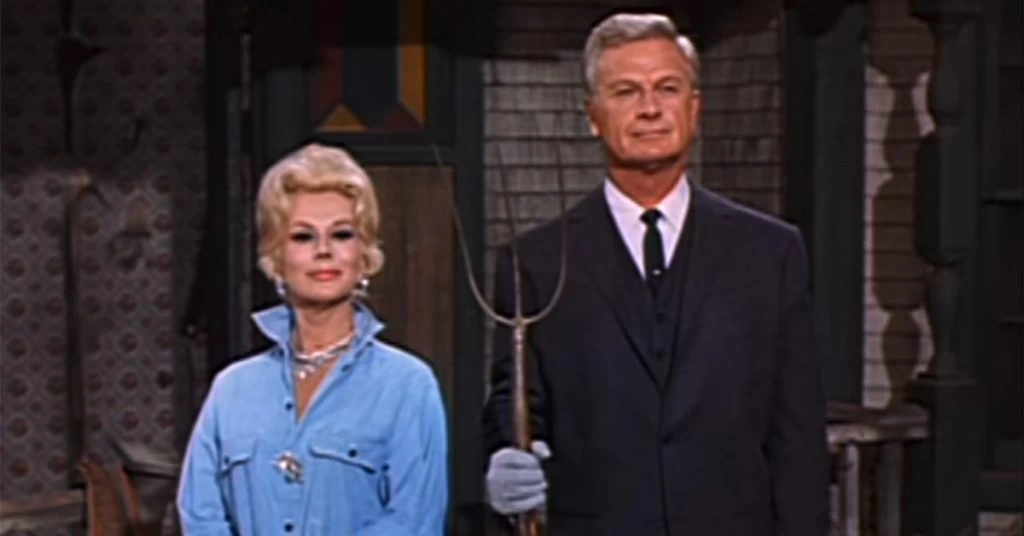
The Plot of Sending a Boy to College
I won’t detail the entire plot here. You can get that if you read the other Green Acres post, but in a nutshell, Oliver and Lisa Douglas (Eva Gabor) decide to send their farm hand, Eb (Tom Lester) to college, so he can be a veterinarian.
How Mr. Haney Fits into the Plot
Well, if you know Green Acres, you know that Mr. Haney (full name: Eustace Charleston Haney) is a masterclass salesman. He sold Mr. Douglas his ramshackle farmhouse and land the beginning of the series, and throughout the show, he is almost always trying to sell Oliver something he doesn’t need.
For instance, Mr. Haney once tried to sell Mr. Douglas wallpaper that was really an eye chart.
Oliver declined the sale.
“It’s real practical. You can sit anywhere in the living room and check your eyes,” Mr. Haney said.
So when Mr. Haney learned that Oliver and Lisa Douglas were going to send Eb to college, well, naturally the salesman had a pitch. His "complete college kit" is full of references to what college students were interested in during the 1920s and 1930s.
Mr. Haney drove up to the Douglas farm behind the wheel of a Stutz Bearcat – and wearing a raccoon coat. He has a ukulele on hand and mentioned Ukulele Ike. And then Mr. Haney tried to sell Oliver a “genuine Elliot Ness hip flask.” The hip flask, Haney says, is filled with “non-alcoholic dandelion wine.”
Haney pretends to be dropping by and that a fellow just canceled out his order for “this complete college kit,” and Oliver says, “And now you’re stuck with it.”
“Yeah, I guess I am, unless I can find somebody that’s sending a boy to college,” Mr. Haney says.
“Mr. Haney, I got to give you credit. I knew you were going to get around to me, but I couldn’t figure out how,” Oliver Douglas says.
Oliver declines to buy the complete college kit, but Mr. Haney isn’t dissuaded. “At least he ought to have this official instruction book for singing like Betty Boop,” Mr. Haney says.
Oliver declines.
“How about an autographed picture of Gilda Grey for his gym locker?”
“Uh, I’ve bought him everything he needs,” Oliver says.
“Of course, you got him a genuine Rudy Vallée stein with the words to the Maine Stein Song etched on the bottom,” Mr. Haney says.
Mr. Douglas acknowledges that he has not.
“Mr. Douglas, you're sending this boy to college without any status symbols,” Mr. Haney says.
“He’ll just have to suffer,” Oliver says.
“Well, I’m not going to let him. At least I can give him this free of charge.”
“What’s that?”
“Fifteen years of cat gut for restringing his tennis racket.”
“He doesn't have a tennis racket,” Oliver says.
“He doesn't have a tennis racket? How would you like to buy this genuine Bill Tilden smasher?”
“Mr. Haney, how would you like me to dent your hip flask?” Mr. Douglas asks, making like he’s going to kick Mr. Haney right in the behind.
And so with Mr. Haney making haste in his Stutz Bearcat and driving away, the sales pitch ends. But that is a lot of history to unpack.
In the course of less than three and a half minutes, Mr. Haney has taken the 1966 TV viewing audience through a nostalgic tour of many of the audience's own college days. But watching the same episode in 2021 is an entirely different experience, at least for me. I was born in 1970, and while I knew several of the references Mr. Haney brought up, others went right over my head. Gilda Gray? Ukulele Ike? A Stutz Bearcat?
If you’re interested in a historical tour primarily focused on the 1920s and 1930s, here’s a quick rundown of everything Mr. Haney mentioned in the approximately three minute and 10 second scene, everything that would constitute a “complete college kit.”
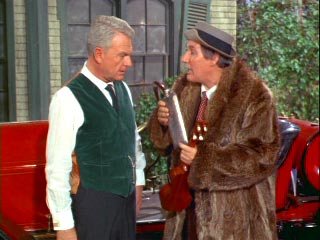
A Stutz Bearcat
Mr. Haney drives up to the Douglas residence in a Stutz Bearcat. As noted, this is often considered America’s first sports car. Or at least the first one that really captured the country’s imagination. In 1911, Harry Stutz, an Ohio business owner who owned the Stutz Auto Parts Company, learned about a new 500-mile race coming up the following year, what would be known as the Indianapolis 500.
Stutz was excited and decided he wanted to race. Unfortunately, he had no car. But he possessed a lot of auto parts, and in about five weeks, he threw together a car, which he named the Stutz Bear Cat (meanwhile, the newspapers of the time called it a Stutz Bear-Cat; later, it would be known as the Stutz Bearcat). Stutz came in, in 11th place, which nobody expected, and what great advertising. Stutz had a car that everybody wanted, and he made them. It went on the market in 1912 and left in 1923 and then briefly resurfaced again from 1931 to 1934. Somehow the car became synonymous with college students in 1920s, possibly because a lot of them were driving older hand-me-downs from their parents or were able to afford the older Stutz Bearcats being sold at car lots deeper into the 1920s. However the connection came about, it wasn’t lost on Mr. Haney.
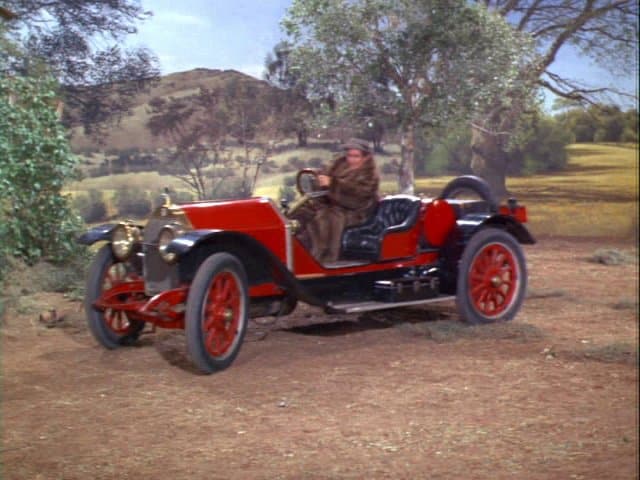
A Racoon Coat
This, too, is often associated with college students in the 1920s. Why? Well, it actually has to do with automobiles like the Stutz Bearcat. If you’re a college student driving around in a Stutz Bearcat, which was a convertible, you were going to be pretty cold in the winter. A raccoon coat solved that problem.
"If you're young and carefree--and if you particularly want that 'collegiate' look, there's nothing to do about it but buy a raccoon coat," wrote a columnist in the Chicago Daily Tribune on August 5, 1924.
Ukulele Ike
Ukulele Ike was a famous singer and ukulele player in the 1920s. His real name was Cliff Edwards, and for some reason, college students were some of his biggest fans. It’s a shame Ukulele Ike has largely been forgotten. Edwards sold millions of records and made “Singin’ in the Rain” famous long before Gene Kelly turned it into a hit movie.
You have heard Edwards, or Ukulele Ike, sing, in any case. He was the voice of Jiminy Cricket, who sang, of course, “When You Wish Upon a Star.”
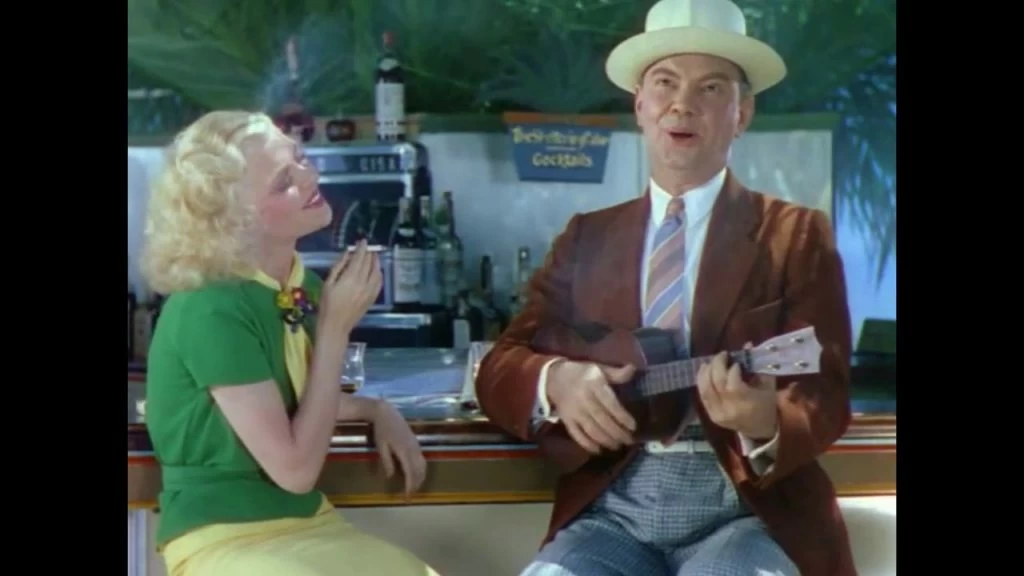
A genuine Elliot Ness hip flask
Very clever product that Mr. Haney is selling. Elliot Ness, of course, was the famed federal law enforcement agent who caught a lot of bad guys, including bootleggers during the Prohibition.
As you probably are aware, Elliot Ness was played by actor Robert Stack in the classic TV series The Untouchables, which ran from 1959 to 1963.
Non-alcoholic dandelion wine
Really, the joke here is that dandelion wine actually could be non-alcoholic. There is no non-alcoholic dandelion wine. Once you ferment dandelions, it’s going to be alcohol.
Dandelion wine in America became extremely popular in 1919, and throughout the 1920s, since Prohibition forbade the sale of alcohol, meaning that Americans were suddenly becoming experts in making their own homemade liquor.
If you were a college student in the United States during the Prohibition, chances are, you became pretty good at making your own dandelion wine.
Official instruction book for singing like Betty Boop
Mr. Haney holds a book that does look like an official instruction book for singing like Betty Boop. I’m not sure if there was anything quite like that during the 1930s, and I don’t think Betty Boop was something of a mascot for college students, but she was a popular icon in the 1930s, and Mae Questel, the voice of Betty Boop, used to sing the song, “Button Up Your Overcoat,” which includes the lyrics, “Keep away from college boys.”
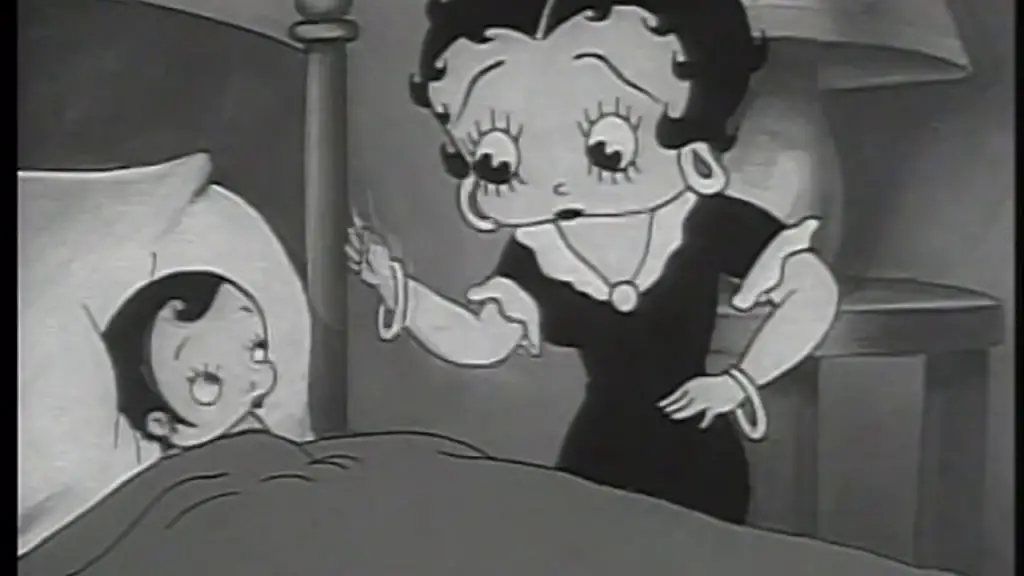
An autographed picture of Gilda Grey for a gym locker
Gilda Grey was a dancer, singer and actress who captivated audiences with her dance called the “shimmy.” It wasn’t a dance Grey created, but she made it her own – and became a huge star during the 1920s, appearing on the stage and in the movies. It was shrewd of Mr. Haney to suggest an autographed picture of Gilda Gray for Eb’s gym locker. Ms. Gray was famous for wearing as little as she could get away with during the Roaring ‘20s.
Gray was born in Poland in 1901 (some sources say 1895) – and had a tough childhood. Her parents were killed in a revolution, and she was sent to an orphanage. She was adopted – and then escaped Poland with her foster parents and moved to Cudahy, Wisconsin, a suburb of Milwaukee, just before the Russians overran her home city of Kracow, before World War I.
She had a tough childhood but a pretty good adulthood, at least for a time. Gray became a sensation in the 1920s, and it is said that for awhile she was the highest paid performer in the world. Even if that wasn’t true, it tells you how famous she was.
Unfortunately, the stock market crash in 1929 destroyed most of Gray’s wealth, and by the 1930s, she wasn’t in as much demand. Her career never really recovered partially due to health issues. In 1959, the thrice-married Ms. Gray died from from a heart attack, which may have been connected to an acute case of food poisoning she had five days earlier.
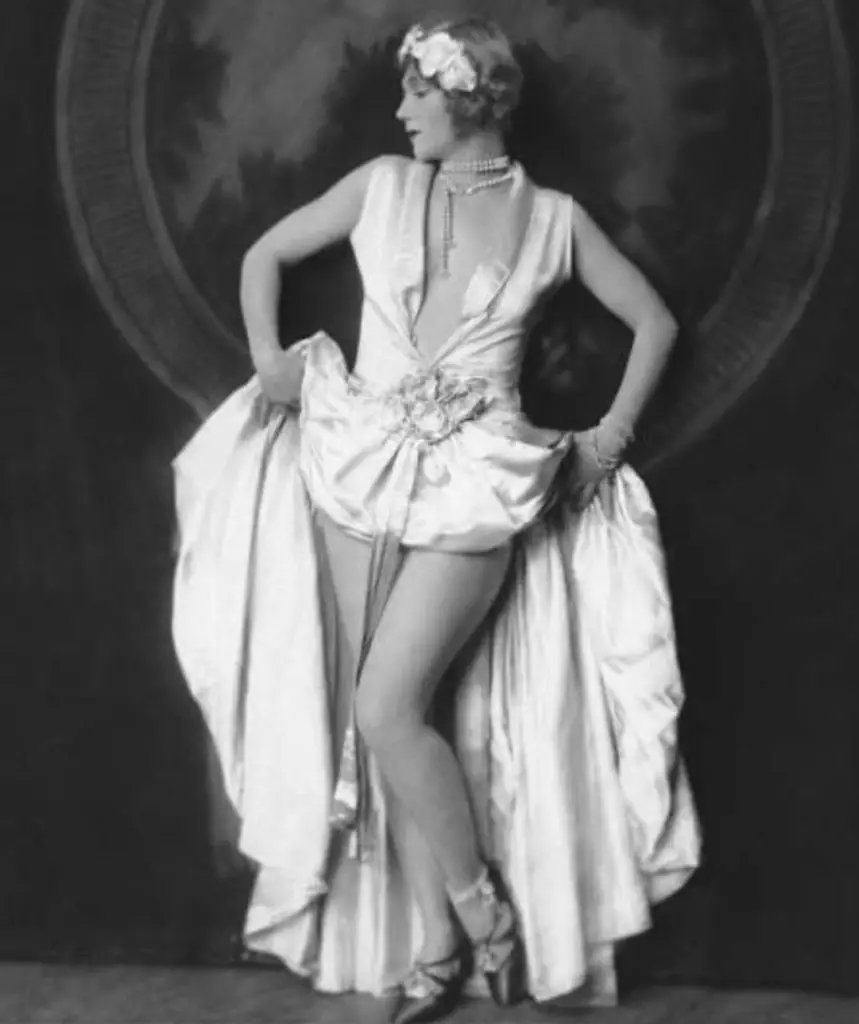
Rudy Vallee stein with the words to the Maine Stein Song
If you watch this Green Acres scene closely, it looks to me like Pat Buttram and Eddie Albert are doing their best not to laugh and break character – especially when Mr. Haney shows off the Rudy Vallee beer stein, complete with the words to the Maine Stein Song etched at the bottom of it. I’m sure kids in the 1960s watching all of this were scratching their heads while the adults, having gone to college or maybe have come of age in the 1920s and 1930s, were chortling.
So as many of you probably are aware, Rudy Vallée is often considered the first, or one of the very first, pop idols. He got his start musically playing the clarinet but became a well-known saxophone player – and bandleader and singer. He performed in orchestras and bands throughout the 1920s, but when he hit radio in 1928, he became a household name.
He remained a beloved, popular figure throughout the 1930s and 1940s – and while his career then started to dim a little, it was just a little. He was still performing on stage and occasionally in the movies and TV. In the 1960s, he played the villain Lord Marmaduke Fflogg on the TV series Batman – and in the 1970s, you’d find him making guest appearances on series like Here’s Lucy, Night Gallery, Alias Smith and Jones and CHiPs. He died in 1986.
But what about the Maine Stein Song etched on the Rudy Vallée beer stein? Well, "The Maine Stein Song" is actually the school song of the University of Maine, where Vallée attended – for a year before transferring to Yale. Vallée was always proud of his Maine roots, though, and he actually ended up recording "The Maine Stein Song" in 1930 – and it became a huge hit. It’s the only college song, in fact, to become a number one hit (for eight weeks).
Sample lyrics:
“Oh, fill the steins to dear old Maine
Shout till the rafters ring
Stand and drink a toast once again
Let every loyal Maine man sing
Then drink to all the happy hours
Drink to the careless days
Drink to Maine, our alma mater
The college of our hearts always”
That it was a drinking song during the height of Prohibition may have had something to do with its popularity.
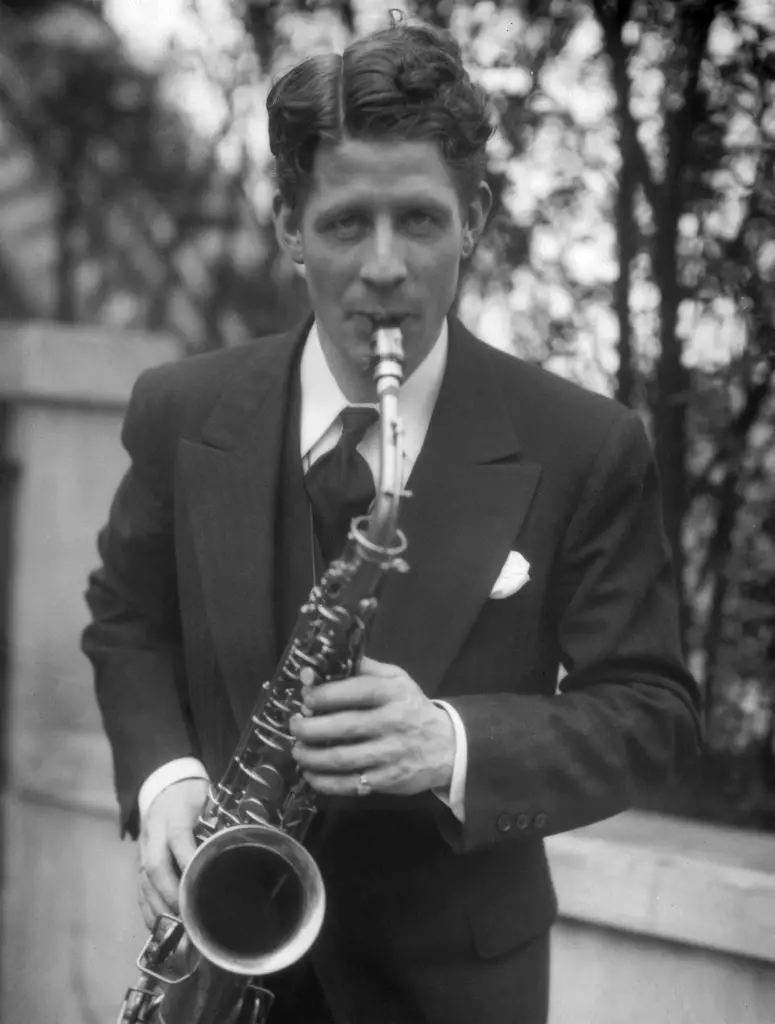
Cat gut for stringing a tennis racket
Mr. Haney was such a generous fellow, willing to part with 15 feet of cat gut, so Eb could restring his tennis racket. This, too, was a part of college in the 1920s, in a sense. Tennis became hugely popular in the United States during the Roaring 20s.
You will be happy to know that the strings of a tennis racket, however, have never actually been made from a cat. One theory goes, according to a 2004 New York Times article, that a string instrument in England was known as a kit gut, and perhaps people started calling tennis strings cat gut.
However it started, particularly throughout the 1920s, many people were under the impression that tennis racket strings were made from the guts of cats. However, cows and lambs weren't so lucky. Tennis rackets were during that time made from their intestines.
Bill Tilden Tennis Racket
Bill Tilden was one of America's top tennis stars during the 1920s -- but also a major force in tennis throughout the 1930s and into the 1940s -- and is considered one of the all-time tennis greats. His nickname back then was "Big Bill," and Mr. Haney calls the tennis racket, a "Bill Tilden smasher," and while you can smash a tennis ball, there's also a possible pun embedded there. Smasher can be a slang word for something big.
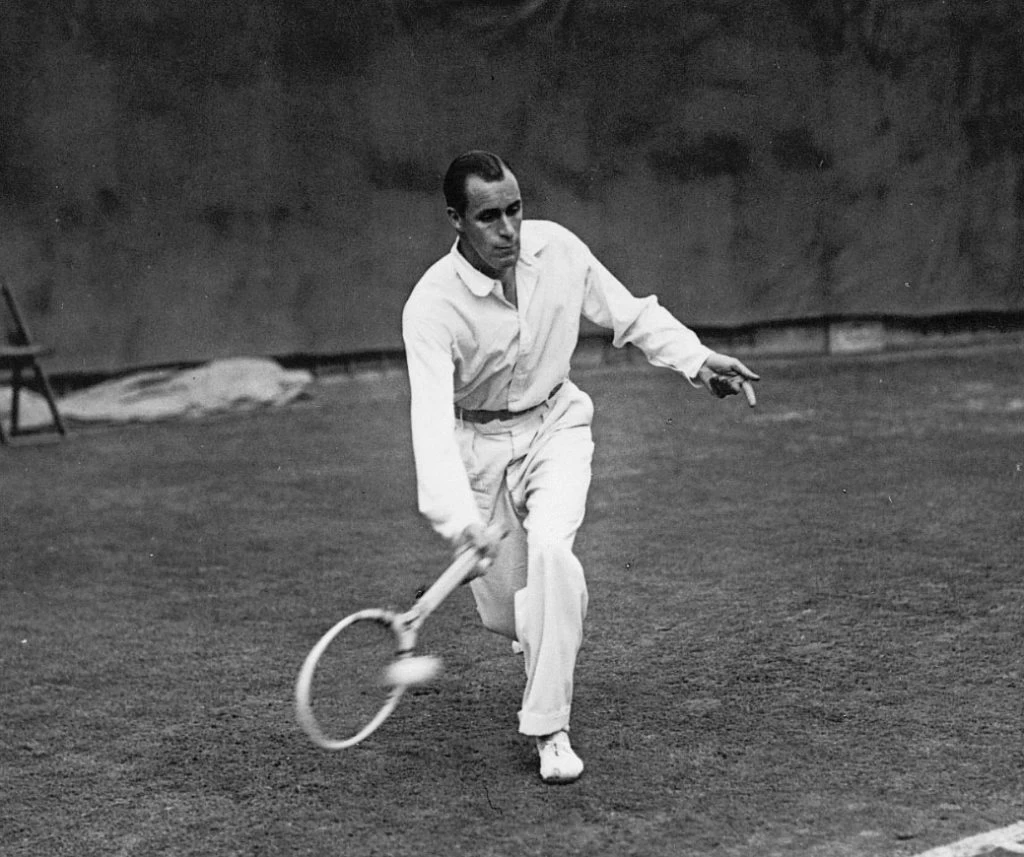
So... that’s a look at college during the 1920s and 1930s – by way of Green Acres. I’m sure it wasn’t loads of fun going to college during the Great Depression, and from what I’ve read, many of the students who were able to hang on were selling things and taking on part-time work so they wouldn’t have to ask parents for money.
But college in the Roaring 1920s must have been something else. Mr. Haney sold some ridiculous items throughout the Green Acres' series run, but I think a lot of people today would pay good money for his complete college kit.
Where to watch Green Acres (at the time of this writing): You can find the first three seasons on TubiTV.com. On cable, you can find it on MeTV.
Articles similar to this Green Acres one: You might enjoy learning about “dish night,” a phrase that comes up in a M*A*S*H episode. “Dish night” covers around the same historical period, from the 1920s to 1930s.

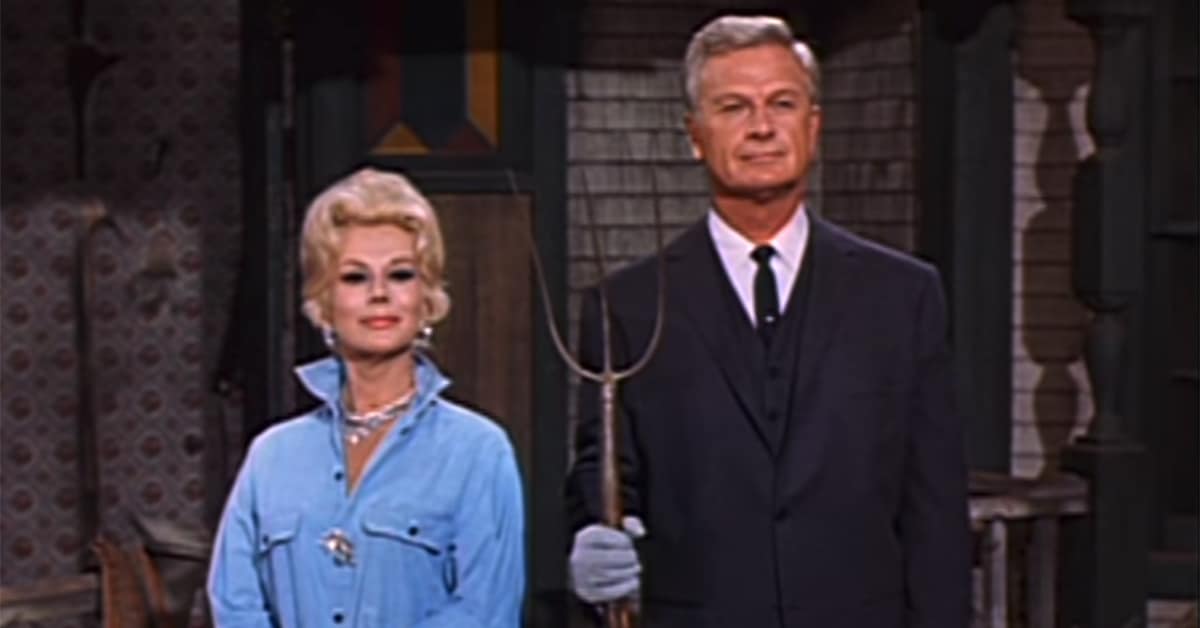
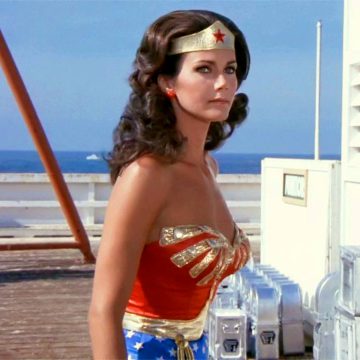
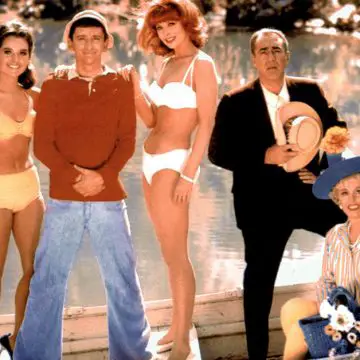
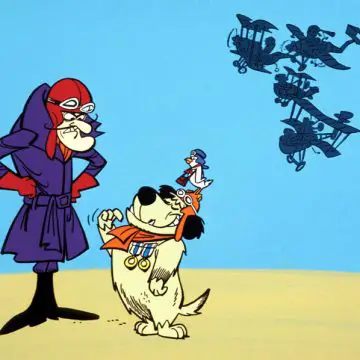
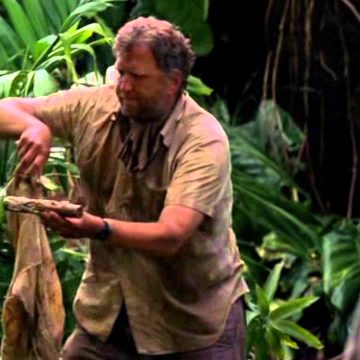
Leave a Reply